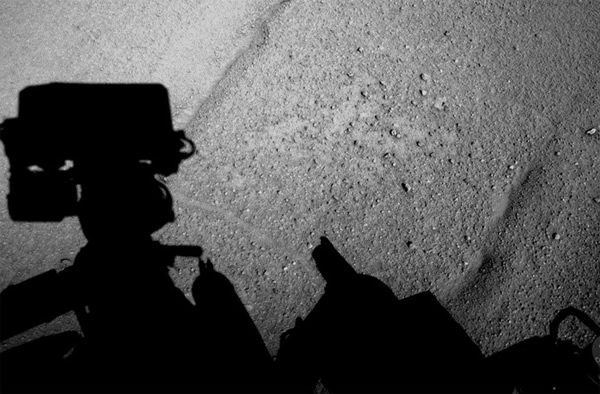Mars Rover's New Skill? Driving Backwards
Curiosity took this shadow “selfie” after its long and backwards drive on Tuesday.
NASA’s Mars rover Curiosity is proving to be a very versatile machine. Case in point: A 329-foot (100.3-meter) backwards drive over the Martian terrain, the longest one-day trek in more than three months.
Rover operators aren’t showing off, however. They were practicing driving in reverse after ground tests showed that mode might better protect the rover’s wheels as it travels over sharp rocks.
Curiosity hit some unexpectedly rough terrain en route to Mount Sharp, a 3-mile (5 km) mound of layered sediment in the middle of Gale Crater, where the rover landed 18 months ago.
Scientists are eager to reach the mountain’s foothills to look for habitats that could have supported microbial life and preserved the evidence.
“We wanted to have backwards driving in our validated toolkit because there will be parts of our route that will be more challenging,” Curiosity project manager Jim Erickson said in a statement.
Late last year, ground control teams discovered Curiosity’s aluminum wheels had more punctures than expected. In addition to driving Curiosity in reverse, operators used pictures taken by orbiting Mars spacecraft to plot a course to Mount Sharp that seems to transverse smoother ground.
Scientists plan to stop at a waypoint about two-thirds of a mile (1.1 km) away called “Kimberley” (previously known as KMS-9) where different types of rock layers intersect. Curiosity will use its instruments and onboard chemistry laboratory for some science investigations while ground controllers assess its route.
“No route will be perfect; we need to figure out the best of the imperfect ones,” Erickson said.
So far, Curiosity has racked up 3.24 miles (5.21 km) on its odometer.(Feb 21, 2014 02:42 PM ET // by Irene Klotz)












